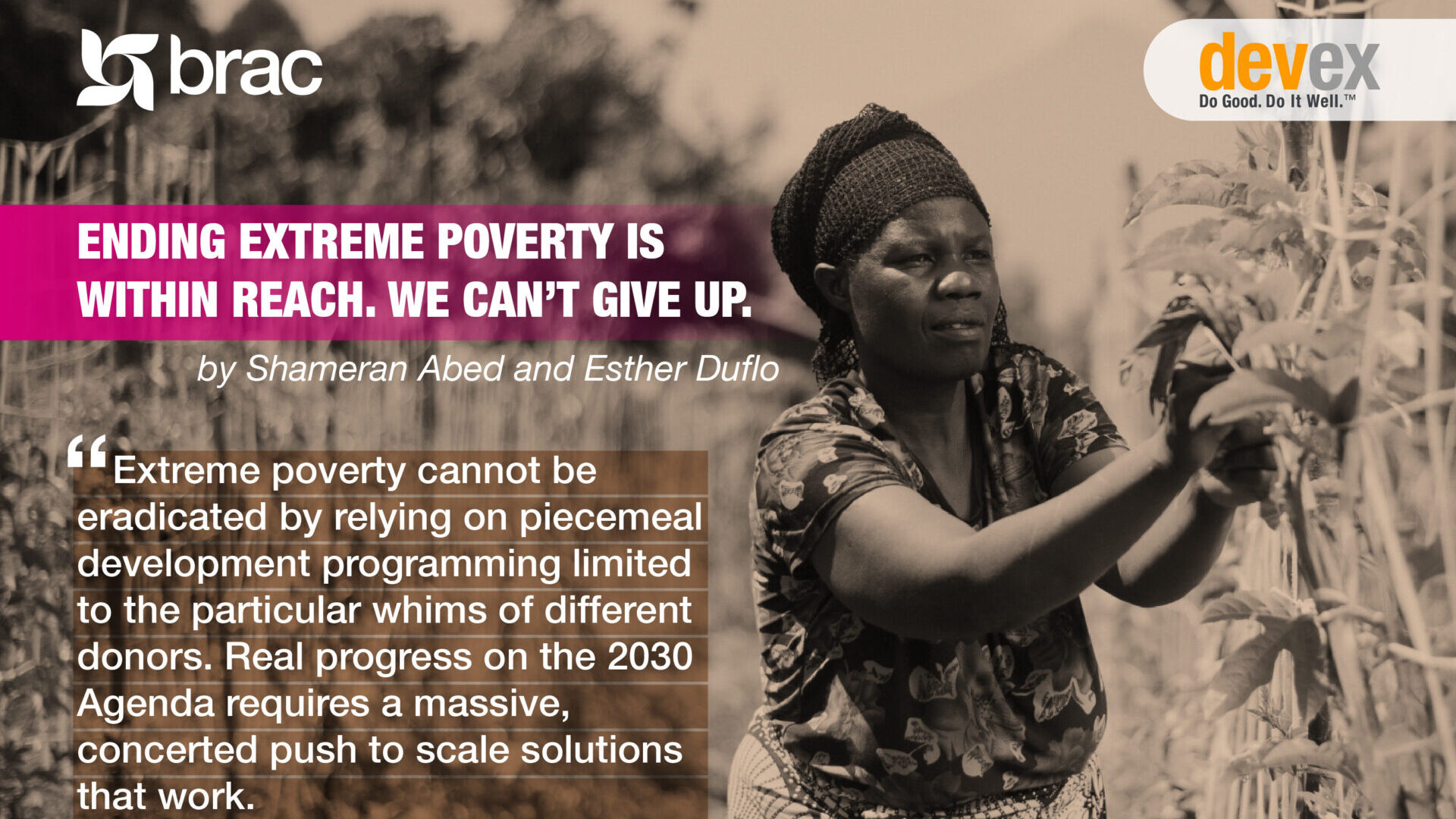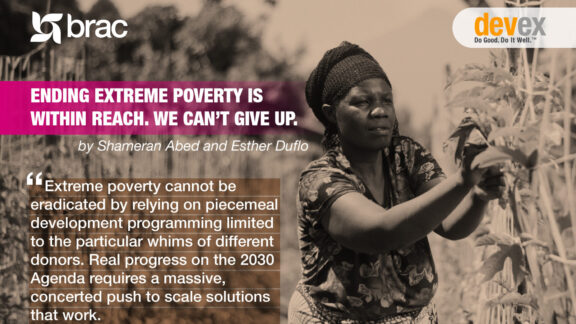This opinion article was originally published on Devex on September 19, 2023.
World leaders are gathering at the United Nations this week, at the midway point of the 2030 Agenda for Sustainable Development, to evaluate stalled progress and talk about how to get us back on track. This means doing more of what has already been proven to work.
The numbers don’t look good.
The Sustainable Development Goals launched by the U.N. in 2015 set the ambitious target of eradicating extreme poverty, defined as living on less than $2.15 a day as goal No. 1. While there has been some improvement — in 2019, 8.5% of the world’s population lived in extreme poverty, down from 10.8% in 2015 — recent crises, including the COVID-19 pandemic, conflict, and escalating climate impacts, have pushed us backward.
But this is not the time to give up hope. Extreme poverty is not an insurmountable problem. We have the resources and the tools at our disposal — the main question is whether we will put them to use.
Many look at how we’ve come up short and either think the goals were way too ambitious, that we don’t have the money, or that we need new ideas. In our experience, none of that is true.





